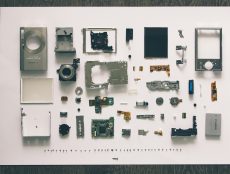
Articles
Higher Education
Why Hands on Education is the Key to Healthcare Career Success
By eLearning Inside
February 05, 2024
This article was written by Sandra Fineman, MPAS, PA-C. She is the associate vice president and and an associate professor for the Center for Interprofessional Studies at Marshall B. Ketchum University.
Online and remote modalities of education have become more popular in the last decade. The recent pandemic created multiple new avenues for effective remote instruction, adapting to the evolving educational environment. However, it’s important to understand and never lose sight of the simple truth that hands-on education is the absolute cornerstone to a successful career for the health care professional.
As a longtime healthcare educator and provider, I believe in the art of medicine as well as the science of medicine. Obviously, the science of medicine refers to the collected body of knowledge as represented by textbooks, and you cannot skimp on that.
But the art of medicine is just as important in the journey to becoming a health care professional wherein the student learns to listen to the patient’s chief complaint as one piece of their larger story, as well as their medical and social history to ultimately determine how best to provide appropriate care for that unique individual, blending compassion and skill.
Without hands-on educational experiences, it is impossible for the student to learn the art of medicine. Additionally, in-depth research and online reading can be influential as well, allowing you to learn more about things such as different careers in medicine and the difference in healthcare administration vs. healthcare management.
From the Comfort Zone to the Growth Zone
Edgar Dale’s well-known Pyramid of Learning states simply that people remember 10% of what they read, 20% of what they hear and 90% of what they do. The truth of this observation has been born out time and time again, and when you consider how high the stakes are for what we are asking healthcare students to remember, that truth becomes even more important.
When the person reporting the weather is wrong about rain, we are inconvenienced; if a healthcare provider is wrong about a diagnosis or a treatment, the consequences are potentially far greater.
Because of this, it is imperative to give students a great deal of hands-on training. One of the primary reasons that hands-on training is so effective is that no other learning method is as useful for getting students out of their comfort zones. It would certainly be more “comfortable” for some students to learn remotely, whether that means from the back of the classroom or at home watching a live-streamed lecture.
Pulling students from that comfort zone may even put them into a bit of a fear zone, where they are unsure about what to expect and nervous about making mistakes. But beyond the fear zone is where learning happens, where they truly begin to understand the medicine and the concepts undergirding it, and beyond that is the growth zone. That’s when they begin to mature into the caring and exceptional healthcare providers that we want them to be.
The Two Pillars of Hands-On Health Care Education
Simulated laboratory training and clinical rotations are the two pillars of hands-on healthcare education, and both methods provide ample opportunity for students to move from their comfort zones to their growth zones.
Simulated labs are the first places where students begin to understand the variety of treatment methods in the real world that go beyond what they learn in their textbooks. They can observe how different faculty members perform different skills, and the different philosophies behind them and then practice their own skills in a safe environment where they are protected from beginner mistakes.
Eventually, students advance to their first clinical rotations, and many are definitely entering the fear zone at that point!
They are treating real patients with real problems, and you can’t get more hands-on than that. But they still have the crucial safety net of a knowledgeable clinical preceptor who is overseeing them, so they still have room to make mistakes and experience the successes by which they will begin to truly grow as a healthcare provider.
I recall one student who requested to be put on the one rotation with a patient population that he was least comfortable with at the very end of his cycle, with the hope that he would be better prepared to succeed in that rotation at that point. I made it his very first rotation.
I knew he was a brilliant student who would flourish, but I also knew that he needed to prove it to himself. If he had started with a different rotation, where he felt more comfortable, there’s no doubt in my mind that his growth would have been stifled.
Even though I understood he had a bit of fear about that rotation, I knew that fear wasn’t smothering, and that the challenges he faced in that difficult setting would cause him to grow in ways that amplified his skills in each successive placement.
The Privilege of Being a Health Care Provider
I often tell my students: “Your patients don’t read the textbooks!” Patients don’t know all the science of medicine; all they know is themselves and their symptoms. They bring their own stories to each visit, and they are often coming to us on their worst days.
They will often make us “uncomfortable.” But each individual patient is so much more than their chief complaint, so we are obligated to bring our best to them. Being able to move from discomfort and fear to learning and growth is one of the crucial ways that we honor the privilege of caring for people, and it’s an important and invaluable benefit of hands-on training for the healthcare provider.
If you thought this article was interesting, check out Online Math and English Games to Help Kindergarten Students.









No Comments